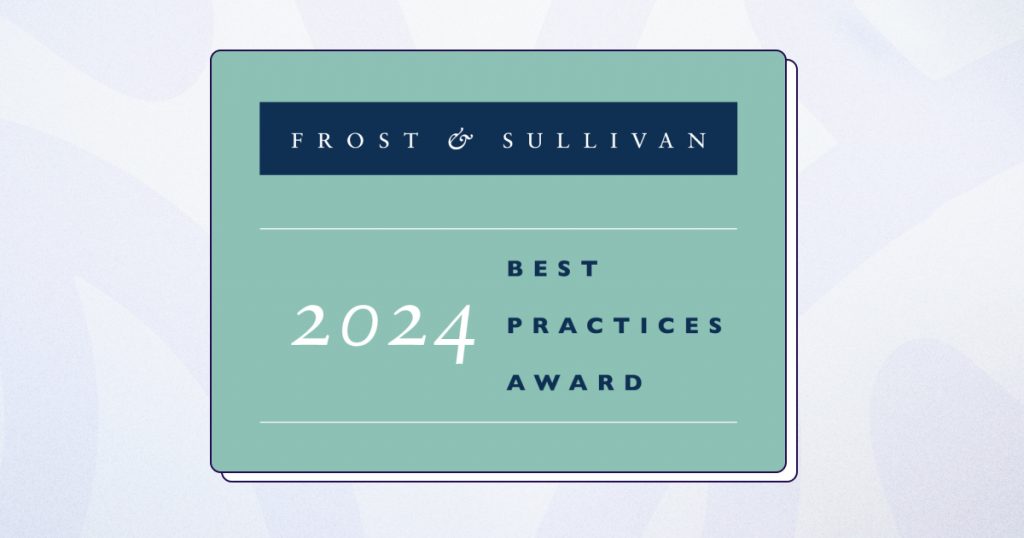
Introduction
Today, we’re diving into the nitty-gritty of creating a killer creative strategy for mobile apps.
Now, you might be thinking, “But I’ve got a great app — surely the hard work is done?”
Here’s the thing: you can develop the coolest app in the world, but it won’t make you a penny if no one knows about it. To spread the word, you need both compelling content (the creative side) and a rock-solid plan to deliver it (the strategic bit).
A top-notch creative strategy is your key to running app marketing campaigns that click with your audience. Think: more app installs and user engagement. It also serves as your playbook for outsmarting the competition and hitting those sweet spots that truly wow your potential users.
So, it’s time to get started — let’s break down the process of crafting (and improving) a winning creative strategy for your mobile app.

Chapter 1
Why is a creative strategy important?
Your mobile app deserves to stand out, right? That’s where a killer creative strategy comes in, giving your marketing campaigns a unique voice your customers just won’t forget. Here’s how:
Encourages creative thinking
A creative strategy serves as the breeding ground for fresh ideas, offering a structured framework that sparks creative thinking. In mobile app marketing, this means brainstorming and developing unique concepts that make your app pop in an already saturated market.
Provides a blueprint for clarity and consistency
A well-defined creative strategy acts as a clear roadmap. It guides your marketing initiatives, ensuring consistent messaging and visuals across various channels. This kind of consistency is key in today’s competitive app landscape — it builds brand recognition, loyalty, and trust among users, driving retention and app success.

Anticipates market changes
Mobile app markets evolve rapidly, so adaptability is super important for sustained success. A creative strategy equips you with the tools to anticipate these changes, helping you stay informed and agile. This proactive approach allows you to adjust your tactics promptly, keeping your brand cool in the ever-evolving landscape.
Gives the most bang for your buck
Time is of the essence in mobile app marketing — and we’re guessing you don’t have money to burn. A solid creative strategy helps you allocate your limited resources effectively, prioritizing the efforts that have the most impact. So, you can finally wave goodbye to wastage and say hello to higher ROI.
Keeps you on track
A creative strategy acts as a benchmark for success. It defines goals and expectations, ensuring your creative outputs align with the overall campaign objectives. This makes your marketing efforts more effective and reduces the risk of going off course.

Chapter 2
How to build your creative strategy
Next, let’s get to the good stuff — building that jaw-dropping creative strategy for your mobile app. Here’s your step-by-step guide:
1 — Define your marketing objectives
Begin by clearly defining your objectives for the mobile app marketing campaign. Consider what you’re aiming to achieve, whether it’s increasing app downloads, boosting app engagement, or improving retention rates. For example, if you want to improve user engagement, think interactive in-app experiences or personalized push notifications.
2 — Write a creative strategy statement
Write a creative strategy statement that’s short but packs a punch. This statement is your north star, outlining your campaign’s purpose, value proposition, and target audience. Something like: “Our mobile app campaign aims to increase downloads by 30% among Gen Z users through interactive social media content highlighting unique app features.”
3 — Set a budget for your marketing campaign
Develop a comprehensive budget that considers all aspects of your campaign. This includes hiring costs, paid marketing, and any necessary tools or services. Allocate resources based on the financial scope and goals of the campaign.
4 — Understand your target audience
Dig deep into your target audience’s world – their demographics, behaviors, and preferences. This intel will shape your messaging, design choices, and channel selection. For instance, your creative strategy for a fitness app can emphasize features like workout tracking, personalized fitness plans, and social sharing options.

5 — Decide on campaign elements, and how you’ll measure success
Identify the core elements of your campaign, such as visuals, ad copies, and interactive features. At the same time, pick app KPIs (key performance indicators) that align with your objectives – these might be app downloads, user retention, or social media engagement. For context, one element could be an engaging video showcasing your app’s functionality, with KPIs including video views and subsequent app installs.
This will help you make data-driven creative decisions, also known as creative analytics.
6 — Tone it up, style it out
Define the vibe of your mobile app marketing materials, a.k.a. the tone and style. Make sure it matches your brand and clicks with your audience. For example, a gaming app can have a playful and energetic tone, while a finance app may opt for a more professional, informative approach. Remember, consistency is key for brand recognition.
7 — Outline your mobile app’s USP
Clearly articulate your unique selling proposition (USP) to highlight what sets your mobile app apart from the competition. Make it a focal point of your creative strategy to capture user attention. For instance, if your app offers personalized workout plans, shout about how it’s the fitness guru in a world of basic workout apps.
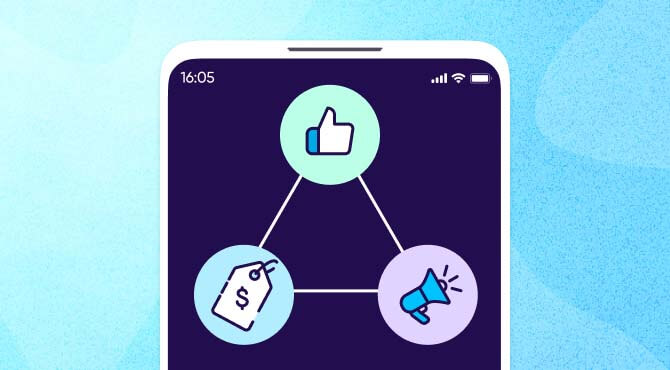
8 — Define stakeholders and include them where relevant
Identify key mobile app marketing campaign stakeholders, such as marketing managers, UX designers, developers, and external partners. Clearly communicate roles, responsibilities, and expectations to facilitate smooth collaboration and decision making.
9 — Set project timeline and deadlines
Create a realistic timeline for executing various tasks and milestones throughout the campaign. Coordinate with your team members and stakeholders to be clear on who’s doing what and when, leading to a smooth project flow. Allocate time for demos, beta testing, and finalizing promo materials leading up to your app’s grand entrance.
10 — Launch your campaign
It’s showtime! Roll out your creative strategy on chosen channels. Keep an eagle eye on your KPIs, make tweaks in real time, and let those compelling visuals, messaging, and unique features steal the spotlight.
11 — Test, tweak, repeat
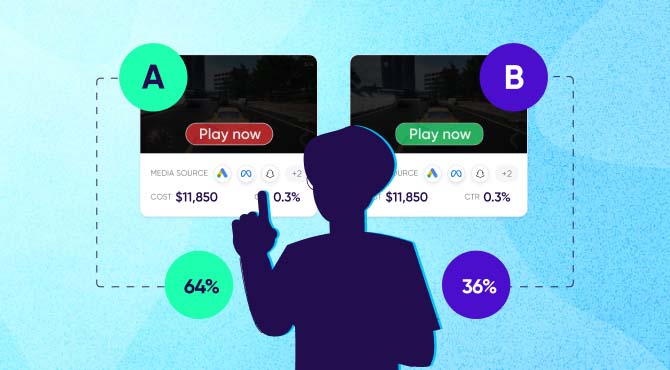
Here’s the gist: do as much creative testing as possible.
Conduct mobile A/B tests and collect feedback to fine-tune your app messaging, design elements, and targeting strategies. Experiment with various ad creatives, messaging nuances, and audience segments to optimize the overall campaign performance.
In addition, analyze campaign data and metrics to pinpoint areas for improvement. Tweak your mobile app marketing strategy using the insights gained from user behavior, market trends, and competitor analysis.
Iterate and refine your approach to maximize results over time. For example, if data says a certain group loves your campaign, create more creatives to woo them.

Chapter 3
Which KPIs to measure
Once you’ve launched your creative strategy, you’ll want to measure and optimize campaigns. Here are some crucial app KPIs worth monitoring to enhance your creative strategy.
1 — Conversion rate
How many times did the user do what you wanted them to do? For instance, did they install your app, upgrade to a premium feature, or make an in-app purchase?
If your conversion rate is high, it means your creative strategy is successfully converting potential users into actual users, and vice versa.
2 — Click-through rate
What percentage of users clicked on the CTA button to learn more?
This KPI indicates how effective your creatives are in encouraging users to take the intended action. Think: clicking on an ad to visit your app’s install page. A high click-through rate means your creatives are performing well.
3 — Engagement metrics (shares, likes, comments)

Are your creatives going viral? How many shares, likes, and comments are they getting on your social platforms?
Although these don’t really show you the big picture, engagement metrics are great for validating the efficacy of your creatives and understanding how users respond to them. Think of it as a way to measure the level of user involvement and interest in your mobile app marketing content.
4 — Lagging indicators
Lagging indicators measure the outcomes and results following a live campaign, providing concrete evidence of your creative strategy’s impact on the bottom line. Examples include the number of leads generated or actual sales attributed to your campaign.

Chapter 4
6 creative strategy best practices
We’ve got more good news — you can apply certain best practices to make your creative strategy more effective. They include:
1 — Be consistent — with voice, messaging, and theme
There’s no winning creative strategy without consistency. By keeping your brand’s voice, messaging, and theme consistent across all your marketing channels, you’ll foster brand recognition and build trust.
Striking visuals, compelling headlines, and unique features are crucial in making a memorable impression. But make sure all your marketing comms are cohesive, from social media posts to in-app messages, for maximum impact.
2 — Adopt an agile and responsive approach
Embrace agility and responsiveness in your strategy. Involve stakeholders at the appropriate stages to ensure alignment and avoid bottlenecks. Coordinate with all relevant parties, including developers, designers, and marketing teams.
And if something isn’t working, don’t hesitate to change it. Monitor app performance metrics and user feedback, and refine strategies to meet evolving market needs.
3 — Don’t forget about the technical specifications
From app stores to social media platforms, every promotional channel has its own technical specifications that you’ll need to meet. Getting this right is essential in showcasing your app effectively and ensuring a smooth user experience.

4 — Know your limits
Set realistic goals within the constraints of your existing resources. This means considering your development capacity, marketing budget, and user acquisition capabilities. Prioritize achievable goals over unreasonable ambitions that set you up to fail.
But realistic doesn’t have to mean boring. Have fun and focus on fostering a positive and creative work environment. Encourage experimentation and testing. After all, the more you test different ideas, visuals, and messaging, the better you’ll understand what resonates best with your target audience.
5 — Balance creativity with accountability and collaboration
Strive to integrate a startup mindset that blends individual accountability with collaborative working. Build diverse teams and create platforms for sharing ideas and constructive feedback, keeping the user at the heart of your decision making. The key is to balance innovation with delivering a stable and consistent user experience.
6 — Keep refreshing your creative plan
Being adaptable to changing market dynamics and evolving audience preferences keeps your mobile app’s messaging fresh and on trend.
How effective are your strategies? How well do they align with business goals? Are your processes as efficient as they could be? Regularly assessing marketing campaign data, app performance, and user engagement will give you the insights you need to refresh your creative plan (at least) every three months.

Chapter 5
Examples of a winning creative strategy
Pokemon GO
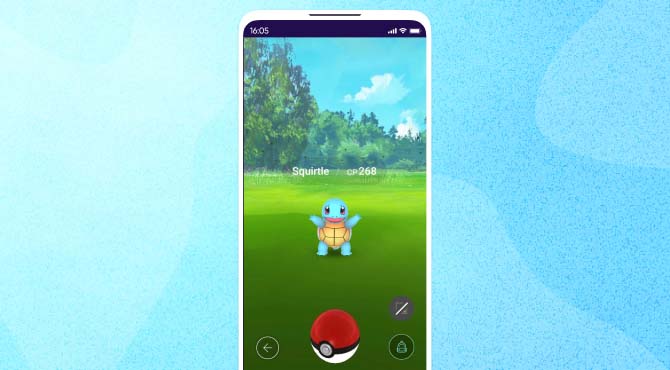
Pokemon GO’s creative strategy combined augmented reality (AR) technology with the beloved Pokemon franchise, creating a whole new playing field.
Players hit the streets, smartphones in hand, capturing virtual Pokemon in their actual surroundings. The game blended nostalgia, gamification, and social interaction into one epic experience. Unsurprisingly, Pokemon GO quickly became a cultural phenomenon, amassing millions of downloads and active users worldwide.
Snapchat
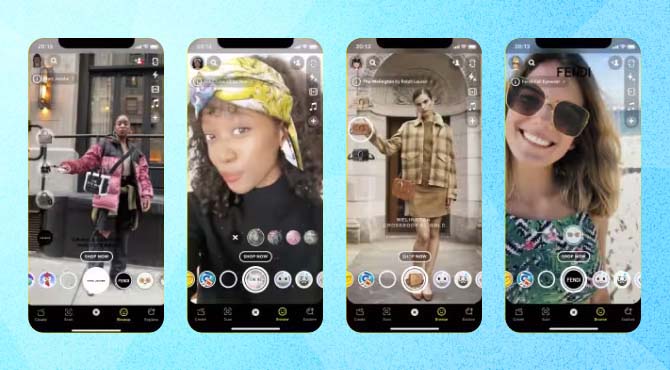
Snapchat deserves the credit for bringing AR lenses to the party, turning real-time face changes into a super fun and engaging experience through its camera.
Their creative game was all about storytelling and self-expression, drawing in tons of daily users happily sharing billions (yup, billions!) of snaps. It became the go-to place for younger folks who loved the interactive ways to share moments. Plus, standout features like disappearing messages and AR filters fueled Snapchat’s swift ascent, solidifying its status as a leading social media platform.
TikTok
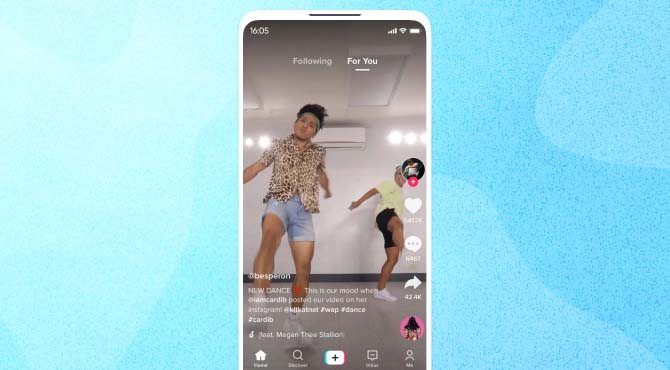
TikTok disrupted social media with its short-form video platform, encouraging creativity and authenticity like never before.
Their creative strategy? Stir up a storm of user-generated content and virality, creating a bustling community of content creators. TikTok’s speedy rise wasn’t luck — it knew how to grab the attention of the cool crowd and start trends that went viral. Brands quickly hopped on the bandwagon with influencer collaborations and sponsored content, turning TikTok into a powerhouse of popularity.
Valorant
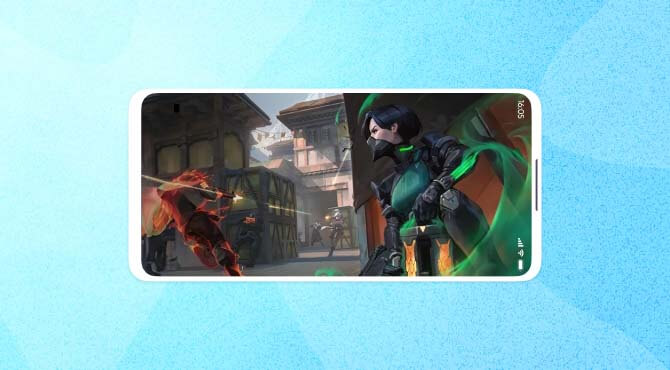
Valorant isn’t your average game: it’s a free-to-play tactical first-person shooter that welcomes both newbies and gaming pros.
The creative promotional strategy was to get the community buzzing by dropping closed beta testing keys during live Twitch streams, creating anticipation and hype. Valorant also went all-in with a unique art style, cool brand partnerships, collaborations with content creators, and hosting awesome events. The result? A massive, pumped-up community, rocking tournaments at pro and grassroots levels, making Valorant a hit in the gaming world.
Spotify
Spotify’s approach to music is an intimate and emotional one. With a commitment to accessibility and a “music for everyone” mantra, the platform ensures a seamless experience across multiple devices.
Its creative strategy aims to generate more app installs through personalized playlists tailored to user habits, preferences, and moods. Thoughtful social features and, of course, the annual Spotify Wrapped add another layer of engagement, keeping users hooked. This savvy approach cements Spotify’s status as the top dog in the audio streaming subscription game, boasting a whopping 574 million users worldwide.

Chapter 6
The impact of AI on creative strategies
Creative decision-making has traditionally been a subjective process. The introduction of AI has made it more objective.
App marketers can use AI to improve creative content, tag content with relevant keywords, and simplify copywriting using AI-powered tools. In fact, the evolution of AI has reached a point where it can optimize digital ads at scale — not only for display but also for OTT video ads.
Creative AI is also a key player in adapting to a cookieless world, addressing the challenges posed by Apple‘s IDFA discontinuation and Google’s phasing out of third-party cookies. AI also goes beyond additional A/B testing and dynamic creative optimization, predicting creative performance before campaigns go live.
You can also use it to co-create, seamlessly generating ideas and concepts to inspire creativity. This fusion of human insight and AI precision makes it easier to uncover genuine human intent, aligning emotional resonance with AI’s speed and scale.
We also can’t deny AI’s impact on more effective ad-making. AI-powered tools can analyze vast amounts of real-time data, giving key insights into target audience behavior, social media trends, and market patterns. The result? Highly personalized ad creatives that lead to increased engagement, better ROI, and more successful marketing campaigns

AppsFlyer’s creative optimization tool
AppsFlyer’s Creative Optimization helps you elevate your ad creatives with its AI-driven features. It gives you unmatched visibility into creative performance, so you can optimize campaigns and make the most of your ad budget. The cutting-edge system adapts to the changing marketing landscape for up-to-the minute insights you can trust.
You can use it to:
- Gain a comprehensive understanding of your entire funnel, covering cost, installs, clicks, retention, and lifetime value.
- Draw on granular insights and performance data to create more impactful creatives.
- Pinpoint the most effective elements and combat creative fatigue, enhancing your return on ad spend (ROAS).
- Foster collaboration between creative, marketing, and agencies through user-friendly galleries.
- Explore diverse creative combinations, employ automatic or custom tags, and conduct in-depth analysis at the creative, scene, or element level to refine your advertising strategy.
What sets AppsFlyer apart is its knack for transforming creative performance into actionable data for your business intelligence. Learn more to elevate your creative game.

Chapter 7
Key takeaways
- A killer creative strategy for your mobile app is pivotal for standing out in a saturated market, fostering brand recognition, and building user trust. It encourages creative thinking, provides clarity, anticipates market changes, helps you allocate resources effectively, and keeps your campaign on track.
- Building a creative strategy starts with defining objectives, creating a concise statement, and setting a comprehensive budget. App marketers must also understand their audience’s demographics to shape consistent messaging, design, and channel selection. Identifying core elements and aligning KPIs further refine the strategy, while keeping stakeholders engaged and informed is key to successful delivery.
- Track KPIs like conversion rate, click-through rate, and engagement metrics to gauge your strategy’s impact and effectiveness.
- Best practices to refine your creative plan include maintaining brand consistency, embracing agility, adhering to technical specifications, and setting realistic goals within resource constraints.
- AI has brought a new, objective approach to creative strategy. You can use it to scale ad optimization, adapt to a cookieless world, go beyond A/B testing, and achieve data-driven personalization, boosting engagement and ROI.
- AppsFlyer’s creative optimization tool includes AI-driven features to provide granular, up-to-the-minute creative insights. It can help combat creative fatigue, enhance ROAS, and transform creative performance into actionable data.




